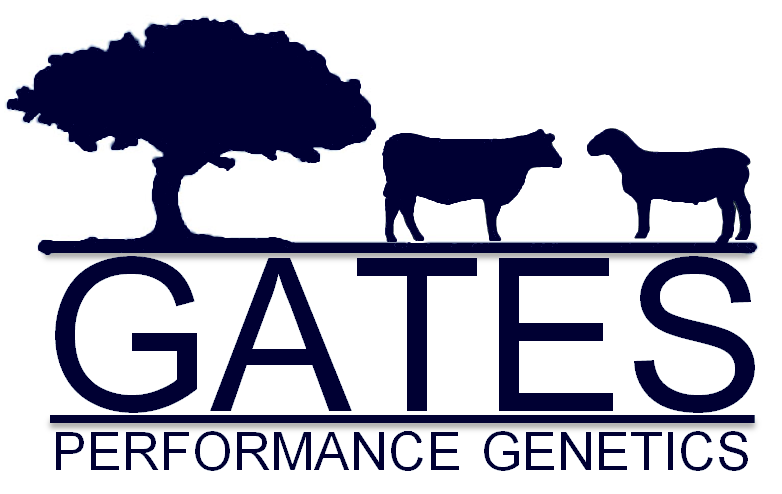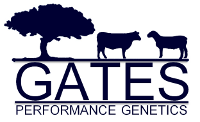
Gates Charolais - Bringing a New Bull Home
Bringing your new bull home
When you buy a new bull or bulls for your herd, you can reduce problems by getting them home and settling them in properly. Bulls of all breeds can become upset and excited during the sale and delivery process. They are subjected to strange yards, different noises, loss of their mates, different people, different handling methods, trucking, unloading, new paddocks and different water and feed. This combination is often enough to upset even quiet animals. New bull buyers are often concerned about the apparent bad temperament of a bull that seemed quiet enough when bought. Understanding why bulls become upset, and organising to reduce stress, allows them to settle down quickly.
Purchase
Temperament is a major characteristic to check when you buy bulls. Inspect the bulls in the yards or paddock before sale and note any unusual behaviour or activity. Note which bulls continually push to the centre of a mob, run around, or are unreasonably nervous, aggressive or excited. A note of this behaviour should be written down in the sale catalogue and referred to during the auction.
At the sale, note any changes of temperament by individual bulls. Some bulls that are quiet in the yard or paddock may not like the pressure and noise of the auction and become excited. Others that were excited beforehand get much worse in the sale ring and can really perform. Using the yard or paddock behaviour as a guide, rather than the temperament shown in the ring, you can often buy such bulls cheaper, provided they are satisfactory in other respects.
Delivery
At auction sales, possession is yours after the fall of the hammer. Continued careful treatment of animals is important. Insurance against loss in transit, accidental loss of use, or infertility, is sometimes provided by vendors. Where it is not, it is worth considering. When you buy a bull, ask what health treatments he has received. For example, has he been vaccinated with 5-in-1? How often and when was it done last? Has he been vaccinated for any reproductive diseases like vibriosis, leptospirosis or three-day sickness? Knowing what has been done can reduce any health treatments.
If you take the bull home yourself:
- Treat and handle him quietly at all times - no dogs, no buzzers. Talk to him and give him time and room to make up his mind.
- With more than one bull from different origins, you must be able to separate them on the truck.
- Make sure that the truck floor is covered to prevent bulls from slipping. Sand, sawdust or a floor grid will prevent bulls from being damaged by going down in transit.
- If you can arrange it, put a few quiet cows or steers on the truck with the bull. Let them down into a yard with the bulls for a while before loading and after unloading.
- Unload and reload during the trip as little as possible. If necessary, rest with water and feed. Treat bulls kindly—your impatience or nervousness is easily transmitted to an animal unfamiliar to you and unsure of his environment.
If you use a professional carrier:
- Make sure the carrier knows which bulls can be mixed together.
- Discuss, with the carrier, resting procedures for long trips, expected delivery time, truck condition and quiet handling.
- Give ear tag and brand numbers to the carrier and make sure you have the carrier’s phone number.
Arrival
When the bull or bulls arrive home, unload them at the yards into a group of house cows, steers or herd cows. Never jump them from the back of a truck directly into a paddock—injury may occur or it may be the last time you see them. Bulls from different origins should be put into separate yards with other cattle for company.
Provide hay and water, and then leave them alone until the next morning.
Give particular attention to preventing new bulls bringing vibriosis into a herd. Vibriosis, a sexually transmitted disease, causes infertility and abortions and is most commonly introduced to a clean herd by an infected bull. These bulls show no signs of the illness. Vaccinated bulls are free from vibriosis, so vaccinating bulls against the disease should be a routine practice. Vaccination involves two injections, 4–6 weeks apart, at the time of introduction, and then a booster shot every year. Complete the vaccinations 4 weeks before joining. When buying bulls from different studs, pre-purchase vibriosis vaccinationing and than an annual booster is the easiest way of managing this disease.
Consult with your veterinarian and draw up a policy for treating bulls on arrival and then annually. Bulls should be drenched to prevent introducing worms and, if necessary, should be treated for lice. Plan to give follow-up vaccinations 4–6 weeks later.
Leave the bulls in the yards for the next day or two on feed and water to allow them to settle down with other stock for company. A bull’s behaviour will decide how quickly he can be moved out to paddocks.
Mating new young bulls
Newly purchased young bulls should not be placed with older herd bulls for multiple-sire joining. The older, dominant bull will not allow the young bulls to work much, and will knock them around while keeping them away from the cows.
Use new bulls in either single-sire groups or with young bulls their own age. If a number of young bulls are to be used together, run them together for a few weeks before joining starts. They sort out their pecking order quickly and have few problems later.
- When the young bulls are working, inspect them regularly and closely.
Managing older herd bulls
Older working bulls also need special care and attention before mating starts.
They should be tested or checked every year for physical soundness, testicle tone, and serving capacity or ability. All bulls to be used must be free-moving, active and in good store condition. Working bulls may need supplementary feeding before the joining season to bring up condition.
All bulls should be drenched, treated for lice and vaccinated with 5-in-1 and for vibriosis, annually. They may need vaccinating against leptospirosis and three-day sickness in some areas.
During mating
Check bulls at least twice each week for the first 2 months. Get up close to them and watch each bull walk; check for swellings around the sheath and for lameness.
Have a spare bull or bulls available to replace any that break down. Replace any suspect bull immediately.
Rotate bulls in single-sire groups to make sure that any bull infertility is covered. Single-sire joining works well but it has risks. The bulls must be checked regularly and carefully, or the bulls should be rotated every one or two cycles.
Bulls are a large investment for breeding herds and they have a major effect on herd fertility. A little time and attention to make sure they are fit, free from disease and actively working is well worthwhile.
Acknowledgment
This publication was originally written by Bob Dent, former Beef Cattle Officer with NSW Agriculture.



